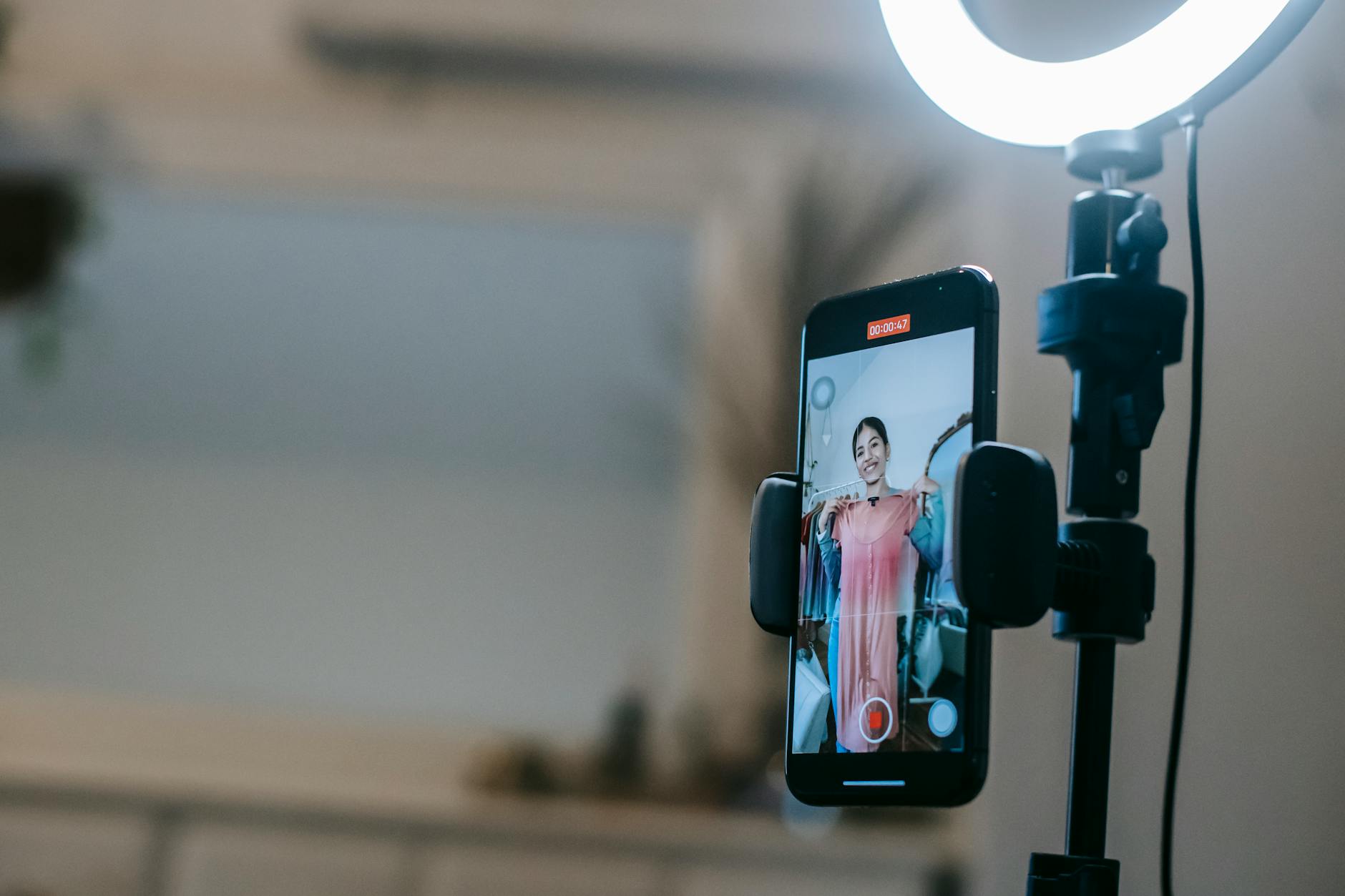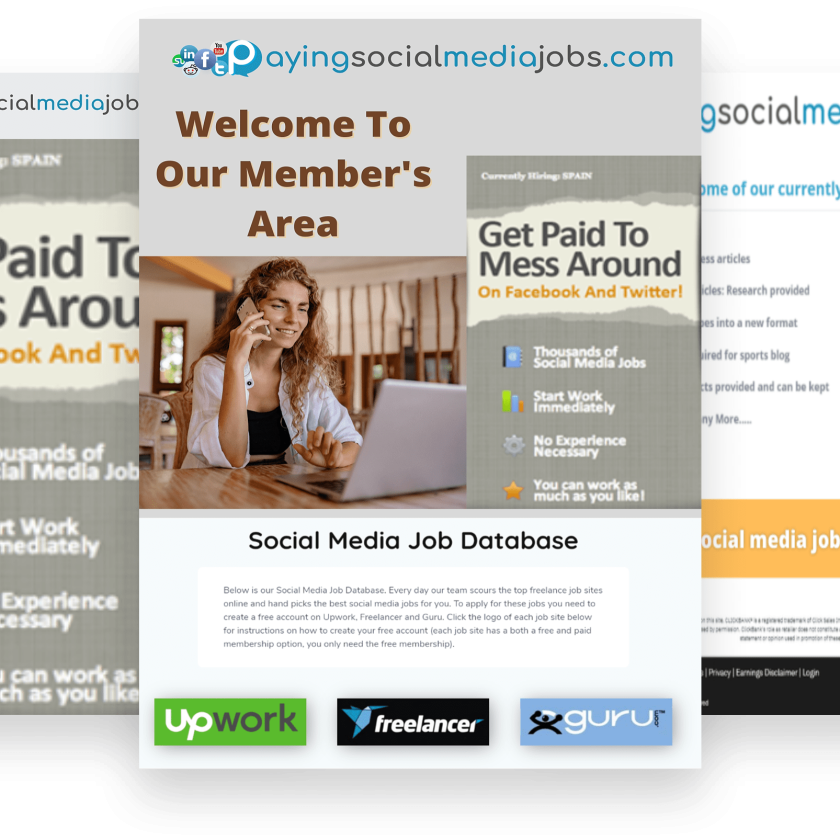Step-by-Step Guide to Starting Your YouTube Channel in 2024
Understanding YouTube and Its Potential
YouTube is more than just a video-sharing platform—it’s a massive search engine, a virtual stage for creativity, and one of the most diverse opportunities for connecting with a global audience. Whether it’s tutorials, lifestyle vlogs, gaming streams, or business content, YouTube has a place for everyone. What makes it so compelling? Let’s break it down.
Why YouTube Stands Out Among Platforms
YouTube is essentially the second-largest search engine in the world, second only to Google. With over 2 billion monthly users, people flock to the platform to find answers, discover trends, or simply be entertained. This unique combination of search functionality and video content gives it an unmatched advantage for content creators.
Unlike social platforms where posts can be fleeting, YouTube content has a longer shelf life. Videos made months or even years ago can still show up in searches and continue to bring in views and engagement. If you want your hard work to be evergreen, YouTube is the ideal platform.
A Space That Enhances Creativity
YouTube is also a space where creativity thrives. From animation to recipe tutorials, the possibilities are endless. The platform encourages people to express themselves in ways no other site does. Are you passionate about explaining complex topics in simple terms? Do you enjoy sharing your genuine life experiences? You can bring your unique flavor to YouTube in a format that works best for you.
Opportunities for Building a Business or Brand
For businesses and entrepreneurs, YouTube presents a remarkable opportunity. You don’t need to be a major player or have expensive gear to get started; authenticity often wins over high-budget production. As a brand, you can showcase your product, explain your service, or just provide value to your audience. Many small businesses have skyrocketed their visibility simply by posting educational or entertaining videos consistently.
Not sure how YouTube could fit into your business strategy? Explore how YouTube’s platform works to understand its features and possibilities.
The Power of YouTube’s Algorithm
The beauty of YouTube lies in its algorithm, which connects the right content to the right viewers. It’s designed to serve videos people will find interesting or helpful, even if they’re not actively searching for them. This ‘recommendation engine’ ensures creators have a unique chance to reach audiences beyond their initial followers. Curious about how the algorithm works? Check out this article on the YouTube algorithm.
To make the most of YouTube’s potential, it’s all about understanding how to cater to your target audience while keeping the algorithm in mind. Engaging, well-optimized videos will not only appeal to viewers but get pushed out to more people over time.
A Platform That Rewards Consistency
Success on YouTube isn’t instant—it’s a commitment. Many creators start small but build their subscriber base through consistent uploads. Whether you’re uploading weekly vlogs or monthly deep dives into a topic, consistency helps viewers know when to expect your content, creating trust and anticipation. It’s like planting a tree; with regular care, your growth will steadily soar.
Photo by Terje Sollie 
Understanding the platform’s potential is just the first step. Whether you’re creating content for fun or a business, YouTube offers tools and opportunities that can help you thrive. Stay tuned for the next steps in building your channel from scratch.
Setting Goals for Your YouTube Channel
Creating a successful YouTube channel isn’t just about uploading videos—it’s about having a clear roadmap. Setting specific and actionable goals can transform your channel into more than just a hobby. Goals keep you focused, motivated, and aligned with what you want to achieve. Whether it’s gaining subscribers, increasing engagement, or building a personal brand, defining these early is essential.
Identifying Your Niche
Before you even hit “record,” it’s important to know what you’ll be creating content about. A niche is your channel’s identity—it tells viewers why they should tune in and keeps them coming back for more. But how do you choose the right one?
- Start with your passions: What do you love talking about? If it excites you, it’s likely to resonate with others.
- Research demand: Use tools like Google Trends or YouTube’s search bar to see what’s popular in your area of interest. A niche combining your passions and audience demand will bring your content to life.
- Check competition: Look at other creators in your space. How can you differentiate yourself while delivering value?
Your niche is like the foundation of a house—get it right, and everything else will fall into place. Want more tips to determine your channel’s focus? Check out this post on setting YouTube goals.

Photo by Bich Tran
Defining Target Audience
Now that you’ve established your niche, it’s time to think about who you’re creating for. Your target audience is your guide, shaping your content style, tone, and topics. But how do you zero in on them?
- Create an audience persona: Imagine your ideal viewer—what’s their age, preferences, hobbies, and challenges?
- Ask the right questions: Are they students, professionals, or parents? Are they looking for entertainment or information?
- Engage and adjust: Pay attention to comments, likes, and shares. These behaviors give real-time insights into what’s working.
Meeting your viewers’ needs builds loyalty and encourages word-of-mouth growth. When you know who you’re speaking to, your videos become more targeted and effective. For help with audience insights, this guide on setting YouTube subscriber goals is a great starting point.
With a strong niche and a well-defined audience, your channel will stand out from the crowd and attract the viewers you want. Ready to move to the next stage? Stay tuned—there’s more guidance coming your way!
Creating a YouTube Account
Starting your YouTube journey begins with a crucial first step—creating an account. Think of this as laying the cornerstone of your channel. Don’t worry—it’s simpler than you might expect.
Choosing a Google Account
Before anything else, you’ll need a Google account, as YouTube is a Google platform. If you already have one, you’re ahead of the game. Here’s the process for those who don’t yet:
- Visit the Google Account Page: Head over to Google’s account creation page.
- Fill Out the Form: You’ll need to enter basic details like your name, username, and password.
- Verify Your Email: Google may ask for a phone number or alternative email to confirm your account.
- Account Options: Choose whether the account is for personal use or a business. A business account can be particularly useful if you plan to brand your channel professionally.
If you already have a Google account, simply sign in to YouTube with your existing credentials. Looking for more details? Check out this simple guide on creating a Google Account for step-by-step support.
Once your Google account is ready, you’re officially prepped for the next step!
Navigating YouTube Settings
Once logged into YouTube, configuring your basic settings is key to tailoring your experience. These quick adjustments can save you from unnecessary headaches later.
- Access Your Account Settings:
- Click your profile image in the top-right corner of the homepage.
- Select “Settings” from the dropdown menu.
- Setup Privacy Settings:
- Under the “Privacy” tab, decide who can see your saved playlists and subscriptions.
- Want to keep things private for now? Turn on “Keep all my subscriptions private.”
- Customize Your Notifications:
- Go to the “Notifications” section.
- Choose how YouTube contacts you (via email, app alerts, etc.).
- Turn off notifications you don’t need to minimize distractions.
- Language and Location:
- Adjust your language and location preferences under “General.“
- This ensures you see relevant content and recommendations.
Taking these steps ensures your account meets your personal or professional goals. If you’re still curious, here’s a comprehensive look into managing your YouTube account settings.
 Photo by Liza Summer
Photo by Liza Summer
By taking the time to optimize these small details in the beginning, you’ll make managing your YouTube presence smoother as you progress. Starting might seem technical, but it’s all part of building your channel’s strong foundation. Ready for the next step? Let’s keep the momentum going!
Channel Branding Essentials
Your YouTube channel is your brand’s visual and emotional identity—it’s the first impression you leave on viewers. Strong branding helps your channel stand out and builds trust. Whether you’re creating tutorials, sharing vlogs, or launching a business, branding is key to viewer retention and growth. Let’s break down the essentials.
Channel Name and Description
Your channel name and description act as a storefront sign and a quick pitch. Choosing the right name can feel like a daunting task, but here are ways to simplify:
- Keep it Memorable: Aim for something short, catchy, and easy to spell. Avoid special characters or overly complex words.
- Be Relevant: Your name should give viewers a clue about your content or personality.
- Cross-Check Availability: Ensure the name isn’t taken on YouTube and social media platforms—consistency helps fans find you.
Once set on a name, focus on your description. This is where you tell viewers what your channel is all about in 1-2 sentences. Highlight what makes your channel unique, and include relevant keywords for better discoverability.
For detailed guidance on effective YouTube channel branding, see Essential Tips for Branding Your YouTube Channel.
Designing Channel Art
Your channel art—logo and banner—sets the tone for your brand, acting as a preview of your style and content. It’s worth investing time and effort into getting it right. Here’s how to make it pop:
Channel Logo
Your logo is your brand’s face. It’s seen everywhere, from searches to comments, so clarity is crucial. Keep these tips in mind:
- Opt for a simple design that looks good in small sizes.
- Stick to your brand colors and a font that matches your vibe.
- Ensure high-quality resolution to avoid a pixelated look.
Channel Banner
The banner occupies prime real estate when users land on your channel. It should immediately convey what your channel offers. Follow these guidelines:
- Size matters: YouTube recommends a banner size of 2560 x 1440 pixels, with text and logos within the safe zone (1546 x 423 pixels).
- Include your upload schedule if possible (e.g., “New videos every Thursday”).
- Use vibrant colors and visuals to grab attention.
For inspiration on branding and visuals, take a look at this guide: How to Brand Your YouTube Channel Like a Pro.
 Photo by Polina Kovaleva
Photo by Polina Kovaleva
Branding is your way of telling viewers, “This is who I am.” When done well, it not only attracts people but encourages repeat visits. Proper names, logos, and banners can create a look and feel that sticks in people’s minds.
Video Production Basics
Creating high-quality videos for your YouTube channel doesn’t have to break the bank or require a studio setup. By investing in the right tools and learning the basics, you can produce engaging content right from your home. Let’s explore the essential components you’ll need to kick off your video production journey.
Choosing Equipment
Starting with the right equipment simplifies the video creation process. While professional setups can be pricey, beginners can achieve great results with some affordable gear. Here’s what you need to get started:
- Camera: You don’t need a Hollywood-grade camera to begin. Many YouTubers start with:
- Smartphones: Modern devices like iPhones or Samsung Galaxy phones can record in HD or even 4K.
- Budget-friendly DSLRs: Consider options like the Canon EOS Rebel or Nikon D3500, which offer excellent video quality.
- Webcams: For live streaming or tutorials, a decent webcam such as Logitech C922 is a reliable choice.
- Microphone: Audio quality often makes or breaks a video. Invest in:
- Lapel mics: Affordable and ideal for voice-driven content.
- Shotgun mics: Perfect for interviews or vlogging.
- USB mics: Great for sit-down videos and streams, like the Blue Yeti.
- Lighting: Never underestimate good lighting. A simple ring light or softbox setup works wonders to eliminate shadows and enhance video aesthetics.
- Tripod or Stabilizer: Keep your shots steady with a lightweight tripod or smartphone stabilizer. Affordable options like the JOBY GorillaPod are flexible and easy to use.
 Photo by Ron Lach
Photo by Ron Lach
Starting out with this basic gear ensures your videos are clear, sharp, and professional-looking without a heavy upfront investment. If you’re looking to explore equipment options further, check out this beginner’s guide to video production.
Editing Software Overview
After recording your video, editing is where the magic happens. A good editor will help you trim unnecessary segments, add transitions, and perfect the overall flow. Here are some beginner-friendly options:
- Free Editing Software: Ideal for those just starting out:
- iMovie (Mac): Simple and brings great results.
- DaVinci Resolve: Free and packed with professional features.
- Lightworks: Another strong free option with a straightforward interface.
- Paid Software for Advanced Features: As your skills grow, consider stepping up to:
- Adobe Premiere Pro: Industry-standard software for flexibility and power.
- Final Cut Pro: Exclusive to Mac and loved by many YouTubers.
- Filmora: User-friendly and affordable.
Each of these tools offers different features, so start with something that matches your current needs. You can upgrade later as your channel grows. For more insight, this ultimate guide for beginners outlines essential editing software and techniques.
Mastering these basics of video production will set the foundation for creating standout content on YouTube. Consistency, combined with the right tools, will help take your channel to the next level. Stay tuned for the next section as we dive deeper into growing your channel!
Content Creation Strategies
Building a successful YouTube channel starts with creating engaging, high-quality content. Without a solid content strategy, your efforts might feel scattered or unproductive. Let’s break down two important aspects of this strategy to help shape your channel content effectively.
Planning Your Content Calendar
A content calendar acts like your roadmap, keeping you organized and ensuring consistency. Picture it as your personal GPS to help you navigate the chaos of ideas and deadlines. Why is it important? A structured plan helps you avoid gaps in uploads and ensures your audience always has fresh content to engage with.
Here’s how to create one:
- Set Clear Goals: Decide how often you want to publish—weekly, bi-weekly, or monthly. Consistency is key to building an audience.
- Brainstorm Topics: Think about what your viewers would find valuable or entertaining. Use audience feedback, YouTube trends, or competitor channels for inspiration.
- Choose the Right Tools: Use digital tools like Google Calendar, Trello, or Notion to organize your schedule. Simple spreadsheets work too!
- Include Deadlines: Assign specific dates for scripting, filming, editing, and uploading.
- Build Flexibility: Leave room for spontaneous ideas or trending topics that could boost your channel’s visibility.
By sticking to a content calendar, you’ll not only improve productivity but also stay ahead of the curve. For more actionable advice on organizing a content strategy, check out this guide packed with tips and tricks.
 Photo by Ron Lach
Photo by Ron Lach
Effective Scripting and Storyboarding
Good videos start with solid planning. Scripting and storyboarding ensure your content flows naturally, keeping your audience hooked until the end. Think of this as the blueprint for your video’s success.
Here are some tips for effective scripting:
- Start with an Outline: Write down the introduction, key points, and conclusion. This gives your video structure and keeps you focused.
- Write Like You Talk: Use conversational language to connect with your audience. Avoid jargon unless necessary.
- Practice Makes Perfect: Read your script aloud to ensure it sounds natural.
- Include a Call-To-Action: Ask viewers to like, comment, or subscribe at the right moments to boost engagement.
Once the script is ready, move on to storyboarding—a visual representation of your video. This step helps you plan camera angles, transitions, and key visuals. Use rough sketches or apps like Canva or Storyboarder for simple digital layouts.
Why bother with storyboarding? It saves time during the filming process and prevents you from missing important shots. As you grow as a creator, a storyboard can even help add creativity to your content, making it stand out.
For further insights into strengthening your content creation processes, this content marketing strategy guide offers practical ideas tailored to creators and marketers alike.
The right preparation tools and strategies will make your video creation process smoother and more effective. With a solid plan in place, you’ll be ready to captivate and grow your YouTube audience.
Optimizing Videos for SEO
The visibility of your videos on YouTube depends largely on your SEO efforts. Successful optimization ensures your content reaches your intended audience, driving views, engagement, and even subscribers. Let’s break down two key areas of video SEO—keyword research and creating compelling thumbnails and titles.
Keyword Research for YouTube
Effective keyword research is the foundation of video SEO. It helps you understand what your audience is searching for and aligns your content accordingly. But how do you get started?
- Use YouTube’s Search Bar: Begin by typing a general topic into YouTube’s search bar. As you type, YouTube will suggest popular searches. These suggestions are gold—they’re actual queries people are making.
- Leverage Keyword Tools:
- TubeBuddy: A Chrome extension that provides insights into search volume and competition.
- VidIQ: An all-in-one tool for researching keywords and analyzing competitors.
- Google Trends: Compare the popularity of topics over time to find what resonates best.
- Analyze Competitors: Look at the keywords successful videos in your niche are using. Check their tags, descriptions, and titles.
Pro Tip: Include your chosen keyword naturally in your video title, description, and tags. This boosts chances of your content being discovered. For more insights, check out Video SEO Best Practices.
Creating Engaging Thumbnails and Titles
Think of thumbnails and titles as your video’s first impression. They need to grab attention instantly and encourage clicks without being misleading.
Thumbnails
A well-designed thumbnail can dramatically improve your video’s click-through rate (CTR). Here’s how to create one that stands out:
- Use Bold Text: Highlight the main idea of your video in a few impactful words.
- Add Contrasting Colors: Ensure text and visuals pop against the background.
- Include Human Faces: Thumbnails with expressive faces tend to drive more clicks.
- Maintain Consistency: Stick to a style that aligns with your branding for recognizability.
Tools like Canva or Photoshop make creating professional-looking thumbnails simple, even for beginners. An eye-catching thumbnail can be the difference between a viewer clicking or scrolling past.
Titles
A strong title complements your thumbnail and provides context. Aim for titles that are both descriptive and intriguing. Here’s how:
- Include Keywords: Place your main keyword early in the title.
- Keep it Short & Snappy: Aim for under 60 characters to avoid truncation in search results.
- Pose a Question or Offer a Solution: Example: “How to Grow Your Channel in 30 Days” or “5 Tips You Need to Try Now”.
Want more tips? Check out 5 YouTube SEO Tips: How to Go Viral for strategies to boost your video ranking.
SEO-optimized videos not only improve discoverability but also keep viewers engaged. Now that you know how to handle keywords and create appealing visuals, you’re one step closer to mastering YouTube SEO.
 Photo by FreeBoilerGrants
Photo by FreeBoilerGrants
Promoting Your YouTube Channel
Building a great YouTube channel is only the beginning. Once your content is live, you need to ensure it reaches the right audience. Promotion plays a key role in growing your channel and increasing engagement. Below, we discuss two effective strategies to promote your content and gain more visibility.
Utilizing Social Media
Social media platforms are powerful tools to boost your channel’s exposure. Sharing your content across different networks extends its reach beyond YouTube and helps drive traffic.
Here are tips to maximize your social media strategy:
- Share regularly: Consistently post updates and link to your latest videos.
- Tailor posts to platforms: For instance, use short clips for Instagram Reels or TikTok, and longer previews for Facebook.
- Engage with your audience: Respond to comments and messages to build a rapport.
- Use relevant hashtags: This helps users discover your content.
- Collaborate within communities: Join Facebook groups or Reddit communities where your content fits, like this discussion on promoting YouTube channels.
Cross-posting your content strategically allows you to tap into diverse audiences. Platforms like Instagram, Twitter, and even LinkedIn offer unique ways to engage users who might not typically find you on YouTube.
 Photo by Eva Bronzini.
Photo by Eva Bronzini.
Collaboration with Other Creators
Teaming up with fellow creators can be a game-changer for expanding your audience. Collaborations introduce your channel to new viewers who may have never discovered your content otherwise.
Here’s how to approach collaborations:
- Find creators in your niche: Look for channels with similar audiences but not direct competitors.
- Engage authentically: Comment on their videos and build a relationship before pitching a collaboration.
- Propose valuable ideas: Offer ideas that benefit both parties, whether it’s a co-hosted video or a shoutout exchange.
- Be professional and clear: When reaching out, explain what’s in it for them and keep communication concise.
Collaborations not only help grow your channel but also encourage creative exchanges. As this guide on promoting YouTube channels suggests, a cross-promotion with creators expands audience reach organically.
Focused promotion through social media and collaborations ensures your hard work doesn’t go unnoticed. Strategic efforts to connect with your audience will help set your channel apart as it continues to grow.
Analyzing Channel Performance
Once your YouTube channel is up and running, analyzing its performance becomes an essential part of sustaining growth. Monitoring the right metrics and data allows you to understand what’s working, what isn’t, and how you can adapt.
Understanding Key Metrics
To measure your channel’s progress effectively, certain metrics are indispensable. Each one sheds light on different aspects of your channel’s health and success.
Key Metrics to Track:
- Views: Tracks how many times your videos are watched.
- Watch Time: Total minutes your content is watched, a vital metric for monetization.
- Engagement Rate: Includes likes, comments, and shares—key to understanding audience reaction.
- Click-Through Rate (CTR): Measures how many people clicked on your video after seeing the thumbnail.
- Audience Retention: Indicates how long users are watching your videos. Think of it as your “stickiness” factor.
- Subscriber Growth: Demonstrates how well your channel is converting casual viewers into loyal followers.
Regularly monitoring these data points helps identify patterns and trends specific to your audience. For a comprehensive breakdown of tracking these indicators, see YouTube Metrics: Top 10 KPIs To Track (And How Often).
Adjusting Strategies Based on Data
Once you’ve gathered your data, the next step is to act on it. Analytics are only useful if you’re willing to make changes based on the insights they provide.
Adapting Content:
- Low Watch Time? Break long segments into shorter, engaging pieces.
- Decreasing CTR? Revamp your thumbnails and titles to be more intriguing.
- Low Viewer Retention? Review your video intros—do they hook the audience in the first 10 seconds?
Revisiting Upload Strategy:
Analytics can guide your overall publishing schedule. For example:
- Videos performing better on weekends? Plan uploads accordingly.
- Seeing spikes at certain times of the day? Use this data for setting premiere schedules.
Engage More Directly:
Audience engagement data (comments, shares, likes) can even inform how you interact. Generating conversations around your content builds a sense of community. Curious to learn more about boosting these essential metrics? Explore The 10 YouTube metrics you should focus on.
 Photo by Burak The Weekender
Photo by Burak The Weekender
In the world of YouTube, numbers tell stories. When interpreted effectively, analytics light the path to continuous improvement.
Conclusion
Creating a YouTube channel from scratch might seem overwhelming at first, but it’s completely manageable with the right approach. By understanding the platform, setting clear goals, and optimizing your content, you can set a solid foundation for growth.
Take the first step today—whether it’s brainstorming ideas, setting up your account, or uploading your first video. The key is action, not perfection. Each upload is a learning opportunity that brings you closer to mastering the platform.
What’s stopping you from starting? Make your voice heard and your ideas seen.


